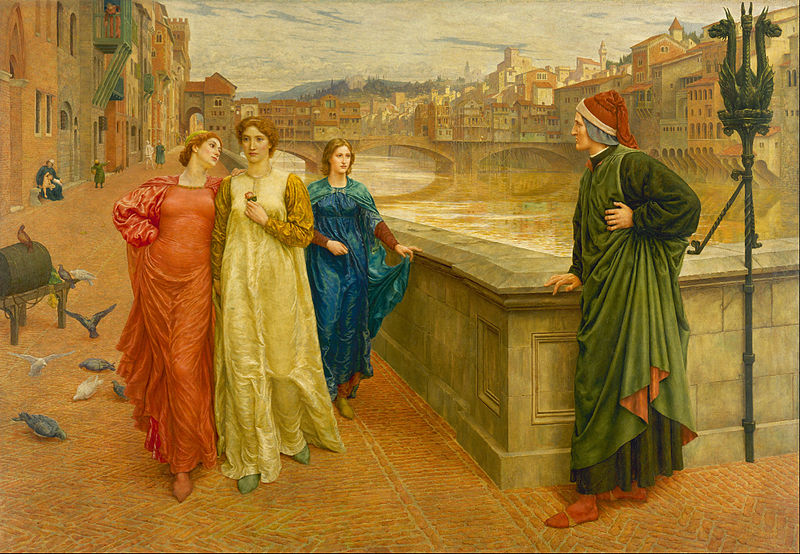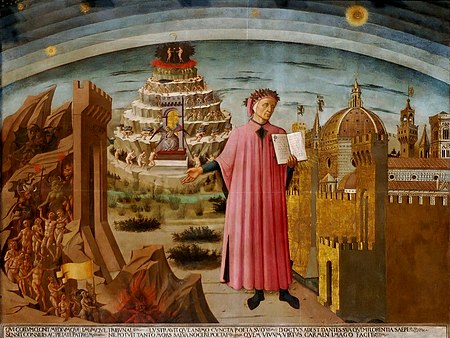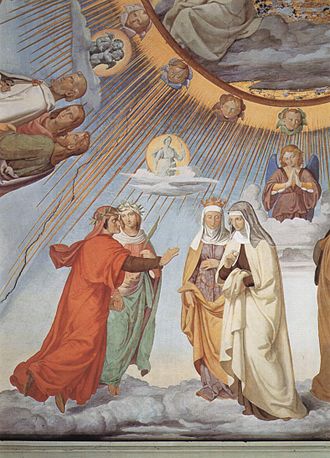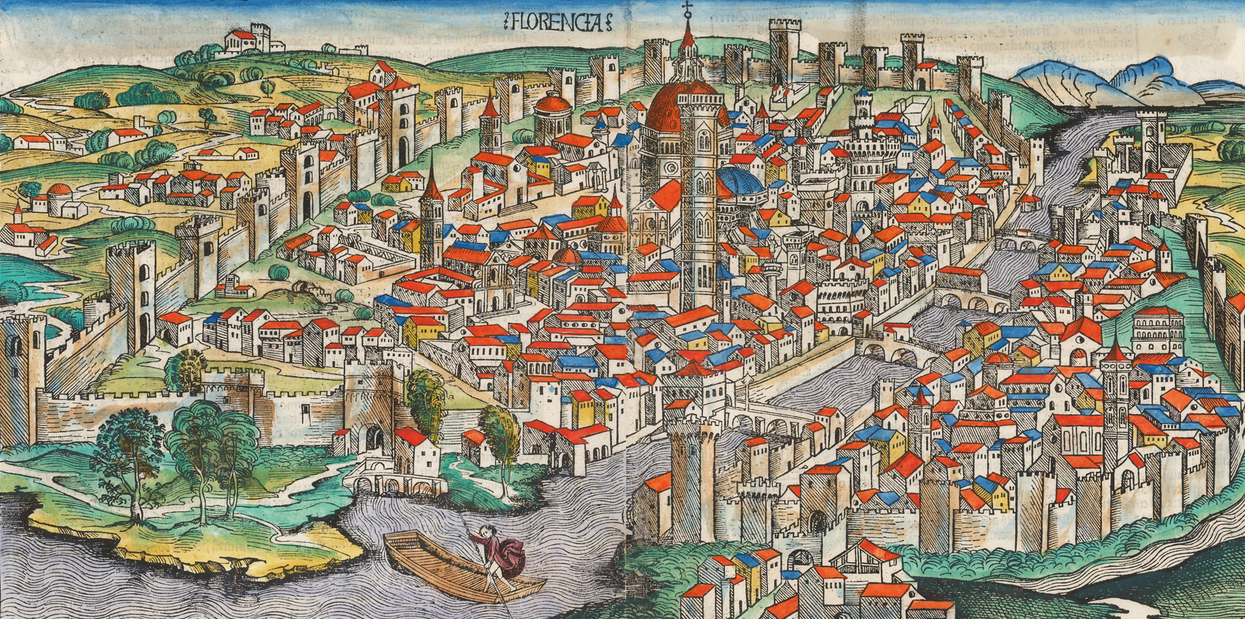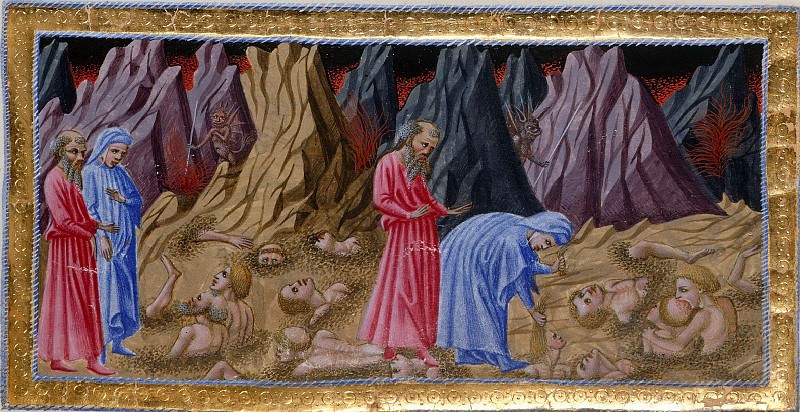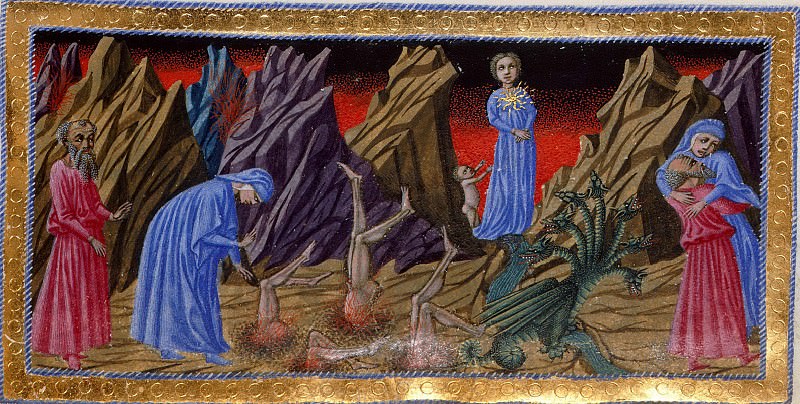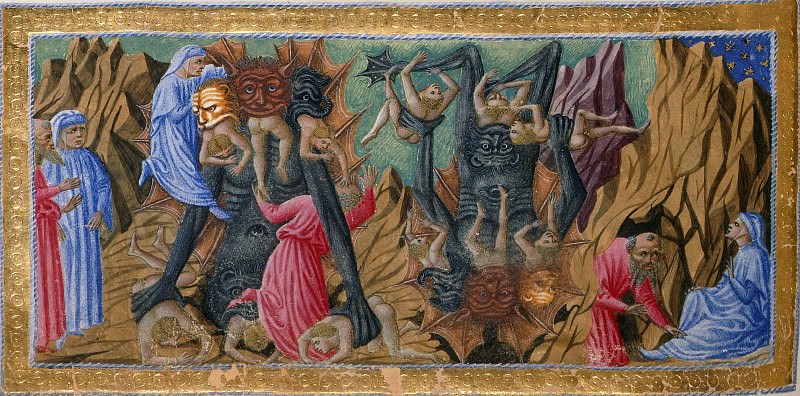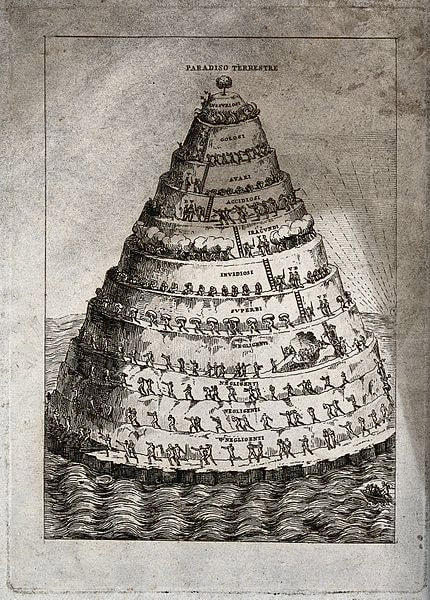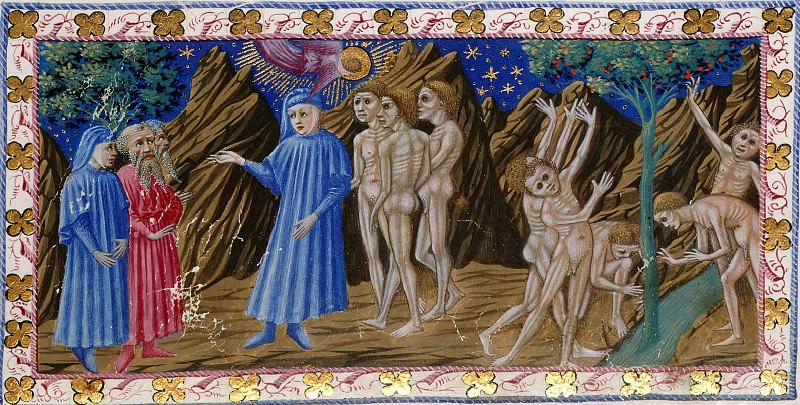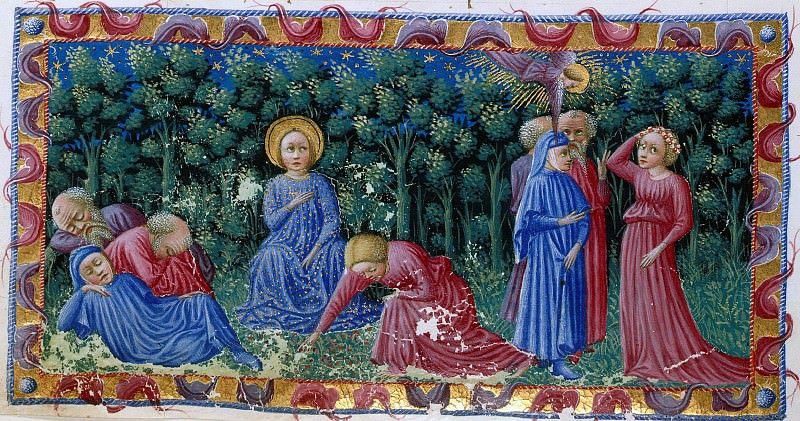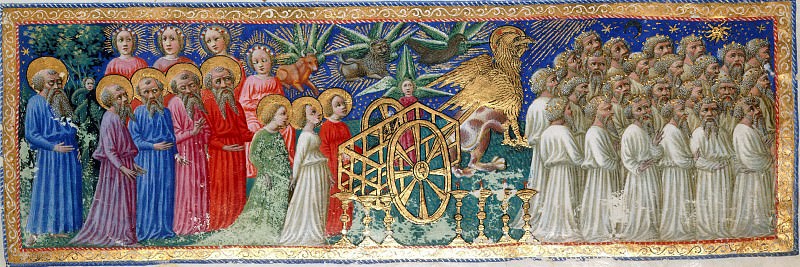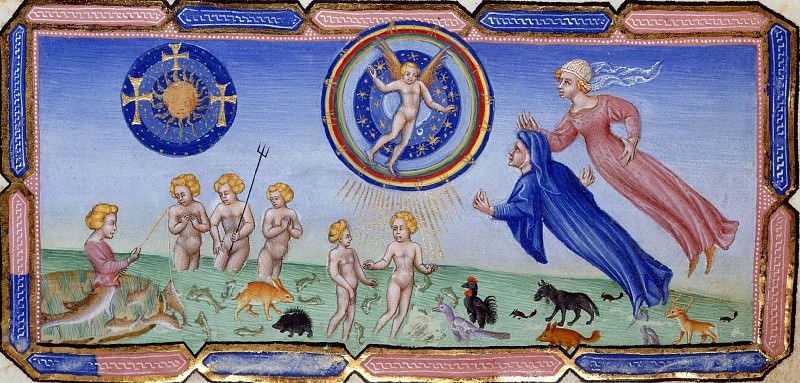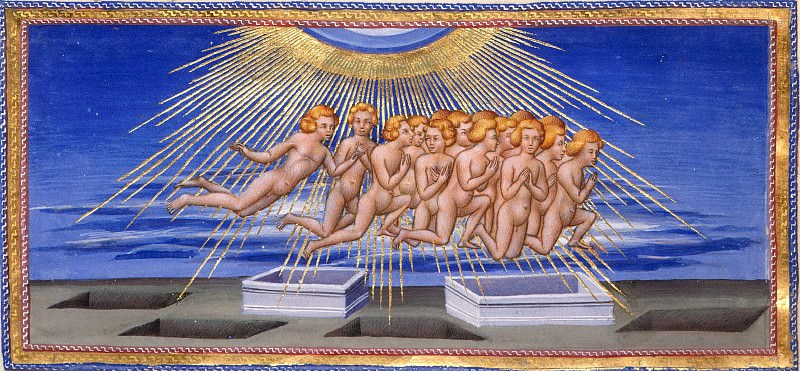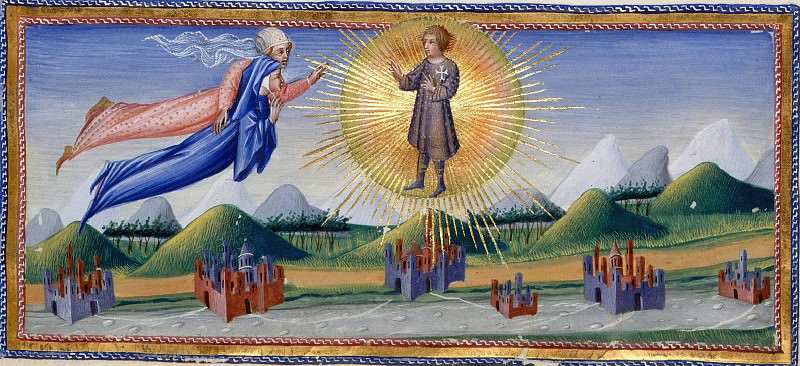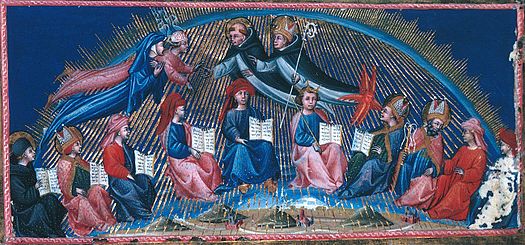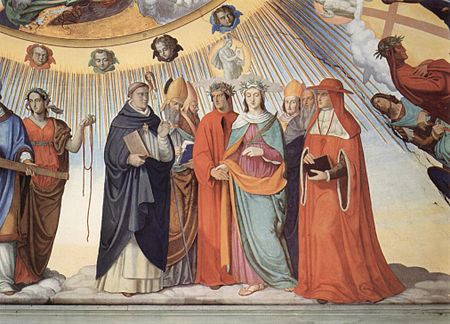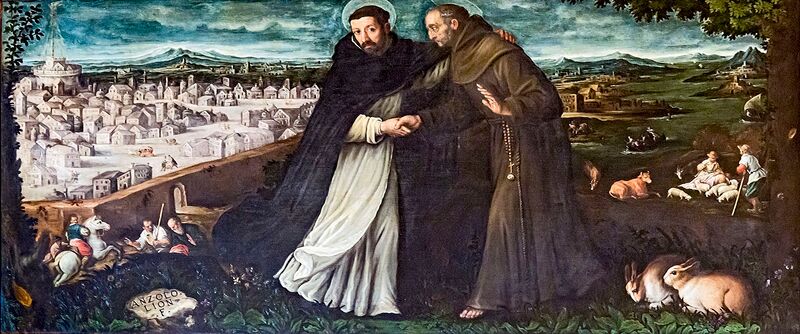Welcome to Danteworlds: danteworlds.laits.utexas.edu/
Dante Alighieri (1265-1321): Life and Legacy
Allegory is a literary representation of an abstract concept or value. Throughout his epic narrative, Dante develops an
extended allegory using a literal description that has secondary, symbolic meanings. For example, the opening tercet in Canto 1--
"[M]idway in our life's journey, I went astray / from the straight road and woke to find myself / alone in a dark wood"-- uses
such diction as "midway," "journey," "astray," "the straight road," and "dark wood." These literal descriptors help set the allegorical stage on which a world-weary reader raises his eyes heavenward and embarks on the spiritual journey through the
netherworld and afterlife along with Dante.
Terza rima is a stanzaic unit of a poem invented by Dante in his Divine Comedy, which uses a chain rhyme, the second line of each stanza rhymes with the first and the third line of the next stanza (aba bcb cdc etc.)
John Ciardi, in his English translation of The Divine Comedy, uses a more fluid form of a tercet (aba cdc efe etc.) whereas the
last two lines of each canto form a rhyming couplet, creating a more empathic closure and transition.
Florence and Florentine Tuscan: the Invention of the Vernacular Italian
Dante penned his Commedia (the epithet "Divine" is a posthumous addition to the original title given by Dante) in his native tongue, Florentine Tuscan--a bold departure from the elite mode of writing, Latin.
|
